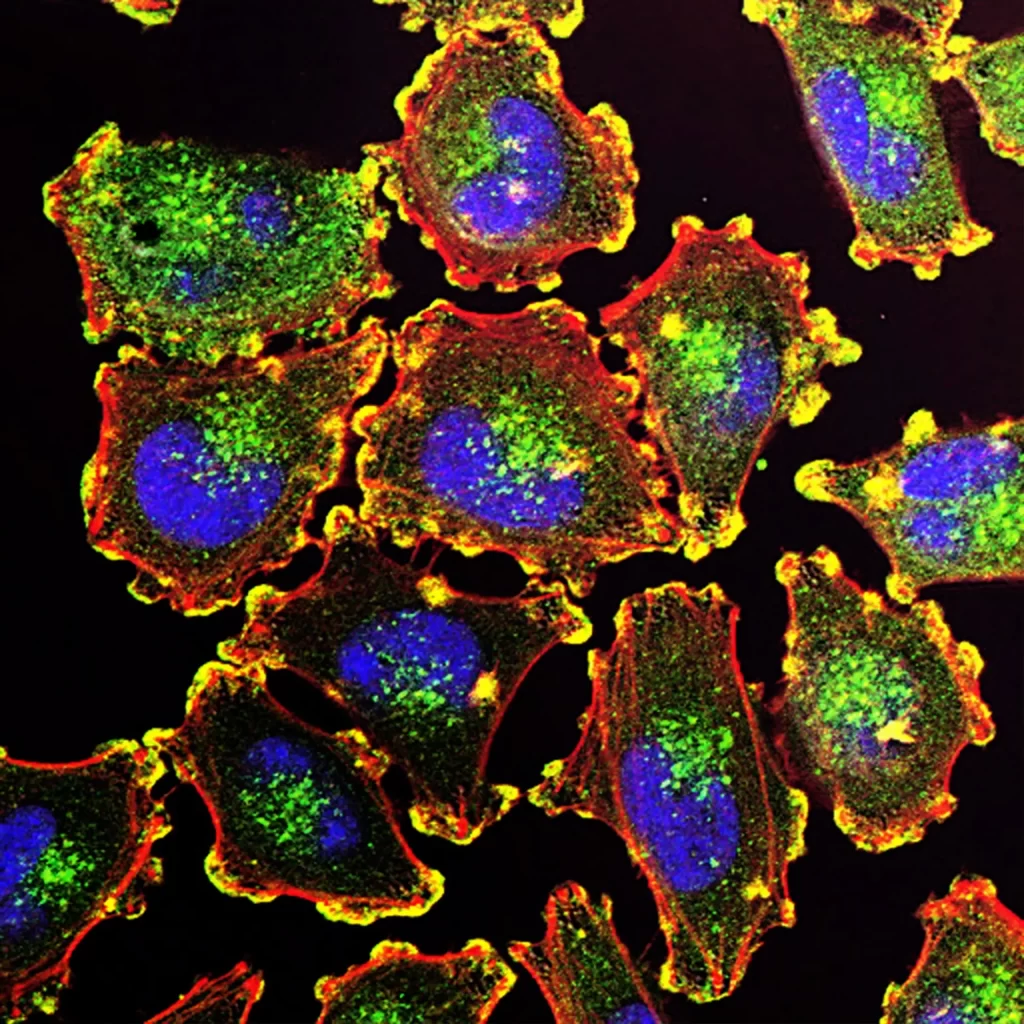
Penetratin, a cell-penetrating peptide (CPP), RQIKIWFQNRRMKWKKGG, has emerged as a significant tool in molecular biology and drug delivery. This article provides a comprehensive overview of Penetratin, its properties, applications, and the latest research insights.
Key Takeaways:
• Penetratin is a powerful CPP derived from the Antennapedia protein of Drosophila.
• It is known for its ability to traverse cellular membranes efficiently.
• Penetratin is used in drug delivery, particularly in targeting cancer cells and crossing the blood-brain barrier.
Introduction
What is Penetratin?
Penetratin is a short peptide derived from the third helix of the homeodomain of the Antennapedia protein in Drosophila. It is one of the most studied CPPs due to its ability to penetrate cellular membranes.
The Structure and Sequence
Penetratin is rich in positively charged residues, which play a crucial role in its membrane penetration capabilities. The amino acid sequence is as follows: RQIKIWFQNRRMKWKKGG
Mechanism of Action
Cellular Uptake
Penetratin is known to interact with negatively charged membrane components, facilitating its entry into cells. This interaction is crucial for its function as a CPP.
Translocation Mechanism
The exact mechanism of Penetratin’s translocation across cell membranes is still a subject of research. It is believed to involve direct penetration rather than endocytosis.
Applications of RQIKIWFQNRRMKWKKGG:
Drug Delivery
Penetratin has been extensively studied for its potential in drug delivery, especially for targeting tumor cells and delivering therapeutic agents across the blood-brain barrier.
Gene Therapy
Its ability to carry large molecules like nucleic acids makes it a promising tool for gene therapy applications.
For more information on Penetratin and its applications, visit LifeTein’s page on Penetratin.
Research Insights
Penetratin in Cancer Therapy
Studies have shown that Penetratin can selectively target cancer cells, making it a potential tool for targeted cancer therapy. For instance, a study by Bashiyar Almarwani et al. (read more) investigates Penetratin’s insertion into cancer cell membranes.
Crossing the Blood-Brain Barrier
Penetratin’s ability to cross the blood-brain barrier opens avenues for treating neurodegenerative diseases. Research by S. Bera et al. (read the study) provides insights into its structural elucidation in model membranes.
Challenges and Considerations
Selectivity and Efficiency
While Penetratin is efficient in penetrating cells, its selectivity, especially in distinguishing between healthy and cancer cells, is a critical area of research.
Safety and Toxicity
Understanding the safety profile and potential toxicity of Penetratin is essential, particularly for its use in clinical applications.
For a deeper understanding of Penetratin’s properties, explore LifeTein’s overview of Cell Permeable Peptides (CPPs).
Frequently Asked Questions
1. What makes Penetratin a unique CPP?
• Its high efficiency in penetrating cellular membranes and the ability to carry large molecules.
2. Can Penetratin be used in treating brain diseases?
• Yes, its ability to cross the blood-brain barrier makes it a candidate for treating neurological disorders.
3. Is Penetratin selective in targeting cells?
• Current research is focused on enhancing its selectivity, particularly in distinguishing between healthy and cancer cells.
For further reading on Penetratin’s interaction with cell membranes, consider the research by I. Alves et al. on its membrane binding and internalization efficacy (read the study).
Almarwani, B.; Hamada, Y.Z.; Phambu, N.; Sunda-Meya, A. Investigating the Insertion Mechanism of Cell-Penetrating Peptide Penetratin into Cell Membranes: Implications for Targeted Drug Delivery. Biophysica 2023, 3, 620-635. https://doi.org/10.3390/biophysica3040042
Swapna Bera, Rajiv K. Kar, Susanta Mondal, Kalipada Pahan, and Anirban Bhunia. Structural Elucidation of the Cell-Penetrating Penetratin Peptide in Model Membranes at the Atomic Level: Probing Hydrophobic Interactions in the Blood–Brain Barrier. Biochemistry 2016 55 (35), 4982-4996
https://doi.org/10.1021/acs.biochem.6b00518
Alves ID, Bechara C, Walrant A, Zaltsman Y, Jiao C-Y, Sagan S (2011) Relationships between Membrane Binding, Affinity and Cell Internalization Efficacy of a Cell-Penetrating Peptide: Penetratin as a Case Study. PLoS ONE 6(9): e24096. https://doi.org/10.1371/journal.pone.0024096
